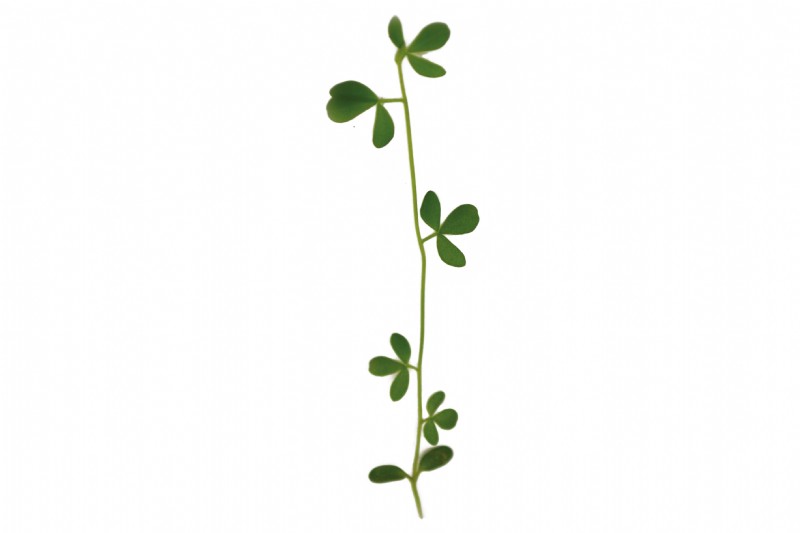Birdsfoot Trefoil
Birdsfoot Trefoil is a legume, it grows from a basal crown, with numerous stems that can vary from prostrate to erect in growth habit. In some parts of the country it is called the 'eggs and bacon' plant.
Uses
It is used for grazing or silage in some areas, however regular, severe defoliation will reduce the persistence of the plant.
Persistence
It is a medium term perennial, lasting from 2 to 4 years.
Strengths
Birdsfoot trefoil, like sainfoin, contains tannins. It is a bioactive forage legume which can improve protein utilisation in ruminant livestock. These legumes can also combat parasitic nematodes (worms), fix nitrogen, cut down methane emissions and are rich in protein.
Frost Tolerance
Birdsfoot Trefoil is winter hardy.
Yield
5 - 6.5t DM/ha
Sowing Rate Advice
5kgs per acre / 12.5kgs per ha.
Not usually sown as a pure stand in the UK.
Mixture Sowing Rate Advice
0.25 - 1 kg per acre / 0.625 - 2.5 kgs per ha.
Sometimes sown as part of a grazing mixture along with white clover.
Ideal Sowing Time
Sow in spring or autumn, soils must be warm, at least 7 degrees Celsius and on the rise.
Management
Severe defoliation will reduce the persistence of the plant. Also when used in a mixture with grass species, allowing the grass to become tall and block out sunlight will have an adverse effect on birdsfoot trefoil.
Distinguishing characteristics
Seed
Birdsfoot Trefoil is one of the smallest legume seeds, it is a rounded kidney shape. The colour can be brown or black and shiny, it is about 0.5-1mm in length.
Seedling
The seedling develops fleshy, elliptical to oblong cotyledons. They are approximately 3mm long by 2mm wide, with very short stalks. Before developing trifoliate leaves.
Flowering Plant
Normally pale green to matt, dark green in colour, potentially hairless or minutely hairy.
The trifoliate leaves alternate either side of the stem, each leaf has a pair of leaflets at the base, which resemble stipules.
The yellow inflorescence, sometimes tinged with red, is found at the end of the long peduncle, often 5 flowers are found, although this can vary. It produces several claw like seed pods per flower.
The root has a reasonably deep taproot, with the ability to also spread laterally.
Additional Info
Average seeds per kg - 780,000. Average protein content 17-20% (although the tanins in the plant mean the protein is utilised more efficently by livestock).
Works well with
Birdsfoot trefoil is often combined in a Herbal Ley, a very diverse mixture which includes grasses, forage herbs and legumes. The anthelmintic and bioactive properties (condensed tannins) of the plant make a useful contribution to improving livestock health, by reducing bloat, worms and processing protein more efficiently. It is also used with less aggressive species like Timothy, smooth stalk meadow grass and tall or meadow fescue, in more traditional grassland mixtures.Buy Birdsfoot Trefoil Straight 
You can find Birdsfoot Trefoil in the following mixtures
- Herbal Over-Seeding Mixture (CSAM3/SAM3)
- Herbal Over-Seeding Mixture 70% Organic
- 'HERBAL' Grazing Ley - Four Year Drought Resistant Ley
- Orchard Clover Understory Mixture
- Operation Pollinator Mix (AHL1/CAHL1/AB1)
- Light Land Operation Pollinator Just Legumes 70% ORGANIC
- Pollen & Nectar Mix Grass & Legume Margin
- Pollen & Nectar Flower Mix Grass & Legume Margin 70% ORGANIC
- Worming Paddock Mixture
- Final Trimester High Nutrient Boost - Strip Grazing
- Two Year Grass/Legume Fallow (NUM3/CNUM3/AB15)
- Autumn Sown Bumblebird (AHW1/AB16)
- Autumn Sown Two Year Grass/Legume Fallow (NUM3) 70% Organic
- Heavy Land Legume & Herb Rich Sward (GS4/SAM3/CSAM3)
- Heavy Land Legume & Herb Rich Sward (OP4/SAM3) 70% Organic
- Light Land Legume & Herb Rich Sward (GS4/SAM3/CSAM3)
- Light Land Legume & Herb Rich Sward (OP4/SAM3) 70% Organic
- Nectar Stewardship Mix (CIPM2/IPM2/AB8)
- Diverse Over-Seed Heavy Land or Cutting Mix (CSAM3/SAM3)
- Diverse Over-Seed Heavy Land/ Cutting Mix 70% Organic







